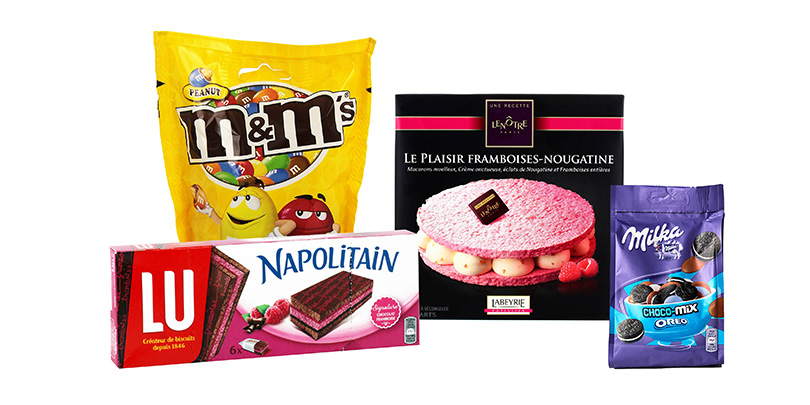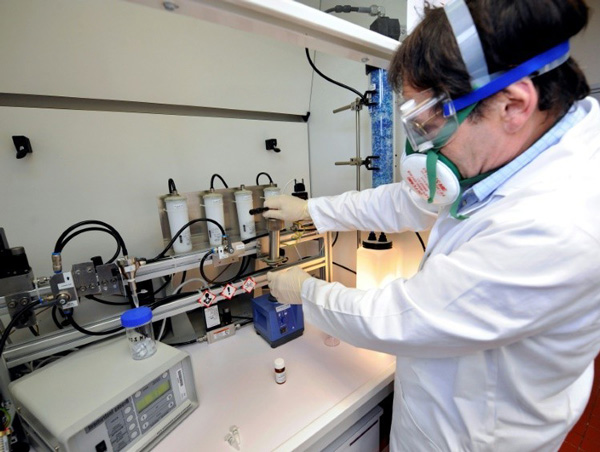Cakes, Candy : Warning on nanoparticles


Nanoparticles are everywhere today (sunscreens, makeup, Car, refrigerators, etc.) and are increasingly part of the ingredients of the foods we consume. But we are always aware of their presence in food ? Does the nanoparticles are harmful to health ?
Nanoparticles and Nanomaterials
We did, few years ago, one study on nanomaterials and we raised the question of whether they were dangerous or not. We now have some additional answers.
As a reminder, nanomaterials, or nanoparticles, are elements whose diameter is less than 100 nanometers. To produce them, some materials such as silver need to be reduced, silicon, titanium oxide in nanoparticles. On this scale, these present interesting new properties for the industry. They make it possible in particular to act on the color, the taste, the texture or smell of a food.
For desserts, Candy, etc., the titanium dioxide (the dye E171) permet d’optimize the whitening aspect for icings and coatings and also helps prevent oxygen and moisture from spoiling the product.
Il existe également d’autres nanoparticules comme par exemple l’Iron hydroxide (the dye E172) or the Silicon dioxide (anti-caking agent E551).


100 % tested products contained nanoparticles !
60 Millions of Consumers conducted the survey on 18 sweet products (Candy, cakes and frozen desserts) likely to contain nano-particle form of titanium dioxide (E171). The investigation revealed that 100 % products tested contained it !
La mention “nano” aurait donc dû figurer sur leurs étiquettes, in accordance with the European Inco regulation. Gold, this is not the case. Either the brands are unaware of this presence in the ingredients they use, either they deny the problem…
nanoparticle concentration of examples in the total amount of E171 :
- iced cakes Monoprix Gourmet : 100 %
- Choco-mix of the mark Milka Oreo : 10 %
- M&M’s : 20 %
- Neapolitan Lu : 12 %
What would be the danger of nanoparticles ?
Because of their small size, nanoparticles can cross our body protective barriers and that's where the danger is situerait. These nanoparticles cross all physiological barriers and bodies (intestine, skin, heart, foetus…) and accumulate in the liver and in the brain.
An alarming study in rats
L’HANDLES issued a opinion rather alarming on titanium dioxide suite à une étude menée par l’INRA published in January 2017 which lasted four years. This study shows that the food additive E171 (consisting in 45 % of nanoparticles is the equivalent of what humans can ingest) penetrates the wall of the rat's intestine and causes decline in your immune system.
Rats were orally exposed to this substance for 100 days. Les chercheurs constatent que le système immunitaire est “atteint” au bout d’une semaine et que “c’est au bout de 100 jours que l’on commence à voir se dessiner des effets toxiques chez l’animal”.
The results of this experiment showed that 40 % rats had pre-cancerous lesions in the colon at the end of the experiment.
What about the risks for humans in general and children in particular? ? Other studies are underway and suspicions continue to rise around the nanoparticles.
L'ONG Taking action for the environment already urged 2016 to apply the precautionary principle (like Bisphenol A or GMOs) and established a list over 300 food contains or may contain hazardous nanoparticles for health : But where the nanoparticles are hiding ?
Also find a list with the different food additives comprising a toxicity index : Food additives
For more information on nanomaterials : Are nanomaterials dangerous ?
The dangers of titanium dioxide nanoparticles (E171) used in food :
Sources :
Recent Posts
How to eliminate toxins ?
After a series of festive meals, caloric menus, alcoholic or carbonated drinks,…
Plastic, not so fantastic!
Plastic pollutes the environment, we all know it. Il faut aussi rappeler que les objets…
How to eat healthy during lunch break ?
At work, lunch breaks are often done on the go, en quelques minutes et…
Eat healthy, it's really possible ?
These last years, le bio et le sain se sont imposés avec insistance dans nos…
Sausages and merguez salmonella
The company L’Atelier du Valois has recalled batches of "Plateau variegated" suite…
What cutting board to choose ?
Should we choose a wooden plank or a plastic ? La planche en bois…




View Comments
les nanoproduits ne présentent pas que des dangers dans l'alimentaire ! : many more dangers of nanoproducts in professional use : "Prevention of occupational risks from nanomaterials" : http://www.officiel-prevention.com/protections-collectives-organisation-ergonomie/risque-chimique/detail_dossier_CHSCT.php?rub=38&ssrub=69&dossid=466